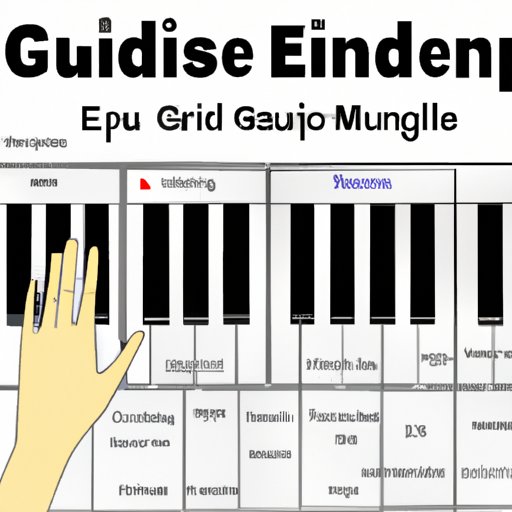
I. Introduction
If you’re interested in learning to play keyboard, you’re in good company. Many people choose to learn keyboard as their first musical instrument, and for good reason. It’s versatile, portable, and relatively easy to learn. Whether you want to play in a band, create your own music, or simply entertain friends and family, learning to play keyboard can be a rewarding experience. In this article, we’ll provide a comprehensive beginner’s guide to playing keyboard, covering everything from selecting your first keyboard to practicing effectively.
II. Beginner’s Guide: A Step-by-Step Tutorial on Playing Keyboard for the First Time
Before we get started, it’s important to understand what a keyboard is. A keyboard is a musical instrument that produces sound by pressing keys. Keyboards can come in different sizes and types, including digital and acoustic. For beginners, a digital keyboard is often recommended due to its versatility and affordability.
The keyboard has a rich history in music, dating back to the 14th century. It has since evolved into the modern keyboard we know today, which has become an essential part of many genres of music.
Now, let’s get into the essentials of playing keyboard. Every keyboard has several essential parts, including the keys, pedals, power supply, and sound module. Keys are the most important part of the keyboard, and they produce different sounds when pressed. Pedals are used to change the sound of the notes played. The power supply is responsible for powering the keyboard, and the sound module generates the sound.
When sitting down to play keyboard for the first time, it’s important to sit with proper posture and position your hands and fingers correctly. Your elbows should be at a 90-degree angle, and your feet should be flat on the ground. Your fingers should be placed on the keys with your thumbs on the middle C. Practice basic finger exercises such as scales to get comfortable with the instrument.
III. The Importance of Proper Hand Placement and Technique When Playing Keyboard
Proper hand placement is crucial when playing keyboard. The correct position ensures that you can play with ease and without straining your fingers or wrists. There are several common hand positions, including the C position, G position, and F position. Each position is used for playing different chords and melodies. When playing the keyboard, it’s important to keep your hands and fingers relaxed and use the appropriate technique for each key.
Good posture is also important for playing keyboard. Keep your back straight with your shoulders relaxed to maintain good posture. This helps prevent injuries and ensures that you can play for extended periods without discomfort.
IV. Understanding Musical Notations: Tips and Tricks on How to Read and Interpret Sheet Music
Sheet music is an important aspect of playing keyboard. It’s a way to read and interpret music and is used by musicians to learn and play new songs. To read sheet music, it’s important to understand the different components, including clefs, notes, rests, and time signatures. You should also be familiar with musical terms, such as tempo, dynamics, and articulation.
Start by practicing reading simple sheet music to familiarize yourself with these components. Once you’re comfortable with the basics, you can move on to more complex pieces of music.
V. From Zero to Hero: Tips on How to Practice Keyboard Effectively and Improve Your Skills
Practice is essential for improving your keyboard playing abilities. Here are some tips to help you practice effectively:
Set aside dedicated practice time each day, even if it’s just for a few minutes. This helps you stay consistent with your practice.
Practice with a purpose. Set goals for what you want to achieve, such as learning a new song or mastering a particular technique.
Take breaks when needed. If you feel tired or fatigued, take a break and come back to practicing later.
Stay motivated by tracking your progress and celebrating small successes along the way.
VI. Exploring Different Genres: A Guide to Playing Keyboard in Various Music Styles
Keyboard is a versatile instrument that can be used in many different genres of music. Whether you’re interested in classical, pop, jazz, or rock, there’s a place for keyboard in your musical pursuits. Start by exploring the basic chords and melodies used in your favorite genre, then challenge yourself with more complex pieces of music.
There are also many popular songs that feature keyboard, such as “Let It Be” by The Beatles and “Clocks” by Coldplay. Look for sheet music or tutorials online to learn how to play these songs.
VII. Conclusion
Learning to play keyboard is a rewarding and fulfilling experience. By following this comprehensive beginner’s guide, you’ll be well on your way to mastering this versatile instrument. Remember to practice regularly, use proper technique, and stay motivated by setting goals and celebrating your accomplishments.




